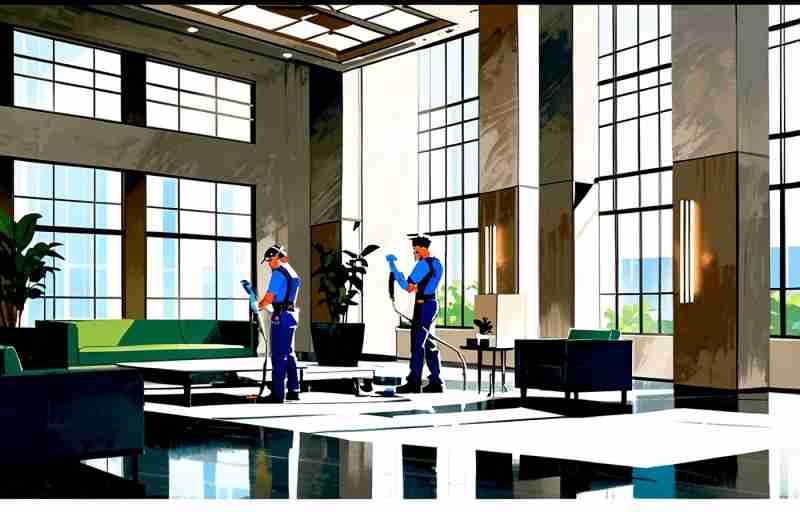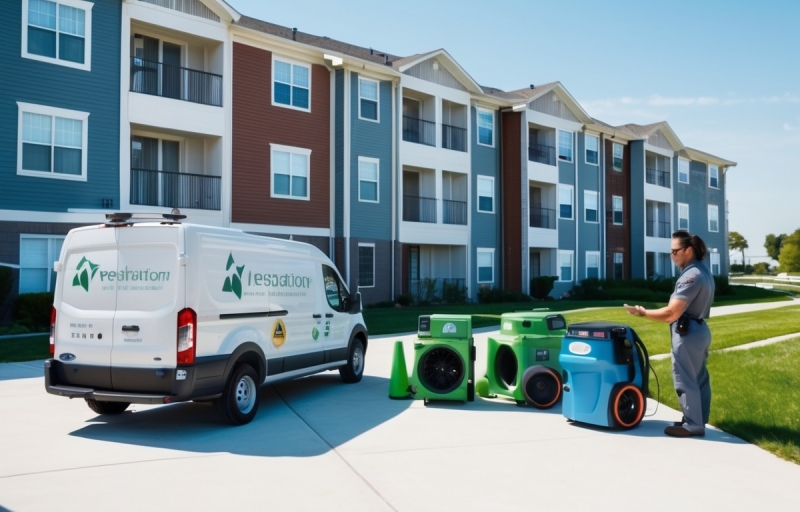Managing restoration projects in multi-unit properties can be a complex and challenging task. Whether dealing with water damage, fire damage, or other emergencies, it’s crucial to act quickly and efficiently to minimize disruption and protect the property. At COMMITTED TO QUALITY SERVICE, we specialize in providing fast, friendly, and professional restoration services tailored to meet the unique needs of multi-unit buildings. Our expert team is equipped with advanced tools designed specifically for water damage restoration and fire damage recovery, ensuring a thorough and effective process. If you’re looking for tips for managing restoration in multi-unit properties, you’re in the right place. From coordinating with tenants to working with insurance companies, we’ll guide you through the essential steps to make restoration smoother and more successful. Need immediate help? Call us now at 855-933-7935 for expert assistance!
Understanding the Challenges of Multi-Site Restoration
Managing restoration across multiple sites presents a unique set of challenges that require strategic planning, efficient communication, and expert coordination. Each location may have different levels of damage, regulatory requirements, and logistical hurdles, making it essential to tailor solutions for each project. According to FEMA, “nearly 40% of small businesses never reopen after a disaster,” highlighting the critical need for effective restoration management.
One major challenge is maintaining consistent quality across all sites. Without standardized procedures, the risk of delays and inconsistent results increases. Another issue is resource allocation—ensuring that skilled labor, equipment, and materials are available where and when they are needed. Additionally, navigating local regulations and insurance claims can complicate timelines and budgets.
“Successful multi-site restoration hinges on proactive planning, clear communication, and a trusted restoration partner.”
Here are some examples of common challenges faced during multi-site restoration:
- Coordinating multiple teams across different locations.
- Managing varying degrees of damage and restoration needs.
- Ensuring compliance with local building codes and regulations.
- Handling insurance claims and documentation efficiently.
- Maintaining consistent quality and timelines across all projects.
For more insights on our approach, visit our About page or explore our comprehensive Services.
Additionally, understanding specific issues like hidden water damage can help prevent future complications. For a deeper dive into industry best practices, check out this helpful resource from the Institute of Inspection Cleaning and Restoration Certification (IICRC): IICRC Standards.
Building a Skilled and Reliable Restoration Team

When managing restoration in multi-unit properties, assembling a skilled and reliable team is crucial for success. A strong restoration team ensures that projects are completed efficiently, safely, and to the highest standards. Start by hiring certified professionals with experience in water damage, fire damage, and mold remediation. Their expertise will be vital in handling complex restoration challenges across multiple units.
Training and continuous education are equally important. Encourage your team to stay updated with the latest industry practices and technologies. This commitment to growth not only improves service quality but also builds trust with property owners and tenants. To learn more about our professional approach, visit our About page.
Clear communication and well-defined roles within the team are essential for smooth operations. Regular meetings and updates help prevent misunderstandings and ensure everyone is aligned with project goals. Additionally, having access to specialized services like mold remediation and water damage restoration can make a significant difference in multi-unit projects.
If you’re interested in seeing examples of our work, feel free to explore our Gallery. Building a dependable restoration team takes time and effort, but with the right people and processes in place, you can manage multi-unit restoration projects with confidence and success.
Prioritizing Tasks for Efficient Project Management

Effective project management in restoration projects requires a clear strategy for prioritizing tasks. When handling multiple restoration jobs, it’s crucial to assess the urgency and impact of each task. Start by identifying critical issues, such as structural damage or health hazards like mold, that need immediate attention. Utilizing a detailed project plan ensures that resources are allocated efficiently, minimizing downtime and preventing costly delays.
Communication plays a vital role in task prioritization. Regular updates between team members and clients help maintain transparency and keep projects on track. It’s also beneficial to familiarize yourself with the full range of services offered, so you can better coordinate specialized tasks like mold remediation or fire damage restoration.
Additionally, using digital tools for scheduling and progress tracking can significantly enhance efficiency. These tools allow managers to adjust priorities in real-time based on new developments or unexpected challenges. For those new to restoration management, reviewing resources like the company’s blog can provide valuable insights and practical tips.
Ultimately, successful task prioritization leads to smoother project execution, higher client satisfaction, and a stronger reputation in the restoration industry. By staying organized and proactive, you can ensure that every restoration project is completed on time and to the highest standards.
Utilizing Technology to Streamline Restoration Efforts
In today’s fast-paced world, technology plays a crucial role in enhancing the efficiency of restoration projects, especially in multi-unit properties. Digital tools such as project management software, real-time communication apps, and advanced moisture detection equipment help streamline operations and ensure that every phase of the restoration process is well-coordinated. By utilizing these technologies, restoration teams can quickly assess damage, allocate resources effectively, and maintain clear communication with property managers and tenants.
For instance, using moisture mapping tools can help detect hidden water damage early, preventing further structural issues. You can learn more about spotting early signs of water damage by visiting our detailed guide on how to identify hidden water damage early. Additionally, cloud-based platforms allow for seamless documentation and reporting, making it easier to track progress and meet deadlines.
At Projekt Restoration, we integrate the latest technology into all our services to deliver faster and more accurate results. Whether dealing with water, fire, or mold damage, our team ensures that every project is handled with precision and care. If you want to understand more about our approach and commitment, visit our mission page. Embracing technology not only improves efficiency but also enhances the overall quality and reliability of restoration efforts in multi-unit properties.
Communicating Effectively with Stakeholders

Clear and consistent communication is crucial when managing restoration projects in multi-unit properties. Keeping all stakeholders — including property owners, tenants, insurance adjusters, and contractors — informed ensures that the project runs smoothly and minimizes misunderstandings. Start by establishing a communication plan that outlines how and when updates will be shared. Regular progress reports, scheduled meetings, and open channels for feedback can help maintain transparency throughout the restoration process.
It’s also important to tailor your communication style to suit different audiences. For example, tenants may need reassurance and clear timelines, while insurance companies might require detailed documentation. Using visual aids like photos and diagrams can make complex information easier to understand. You can explore more about our approach to effective communication and project management on our About page.
Additionally, having a centralized point of contact can streamline communication and prevent conflicting messages. At Projekt Restoration, we prioritize client satisfaction by offering comprehensive services that include regular updates and dedicated project managers. Whether dealing with water damage or coordinating large-scale restorations, clear communication is key to success. For more insights and helpful tips, visit our blog or reach out through our contact page.
Ensuring Compliance with Local Regulations and Standards
When managing restoration projects in multi-unit properties, adhering to local regulations and standards is crucial for a successful outcome. Each city or region may have specific building codes, environmental guidelines, and safety requirements that must be followed during restoration. Failing to comply can lead to costly fines, project delays, or even legal issues. It’s essential to work with a restoration company that understands the local laws and has experience navigating complex compliance requirements.
Before starting any project, ensure you obtain the necessary permits and approvals. Partnering with a professional team like Projekt Restoration can help streamline this process. Their extensive knowledge of local codes ensures that every phase of the project meets legal standards. You can learn more about their approach by visiting their About page.
Additionally, staying informed about updates to regulations is vital. Restoration standards can evolve, especially concerning environmental concerns like mold remediation and water damage control. Explore their comprehensive services to see how they maintain compliance across various restoration needs.
By prioritizing compliance from the beginning, you not only protect your investment but also ensure the safety and well-being of all occupants. Trusting experienced professionals makes the restoration process smoother, more efficient, and fully aligned with all legal requirements.
Monitoring Progress and Adjusting Strategies as Needed
Consistently monitoring progress is crucial when managing restoration projects in multi-unit properties. Regular inspections help identify potential issues early, ensuring that the project stays on schedule and within budget. By tracking milestones and evaluating the effectiveness of current strategies, property managers can make informed decisions and implement necessary adjustments promptly. This proactive approach minimizes delays and prevents minor problems from escalating into costly setbacks.
Effective communication with all stakeholders, including tenants, contractors, and insurance representatives, is essential during this phase. Utilizing detailed reports and progress updates ensures transparency and builds trust throughout the restoration process. If unexpected challenges arise, having a flexible plan allows for quick adaptation without compromising the overall project goals.
For those seeking professional assistance, Projekt Restoration offers a wide range of expert services tailored to meet the unique needs of multi-unit properties. Whether dealing with water damage, fire recovery, or mold remediation, their experienced team ensures that every project is handled with precision and care.
Additionally, staying informed through resources like their detailed blog can provide valuable insights and tips for better project management. By continuously monitoring progress and being ready to adjust strategies, property managers can ensure a smoother, more efficient restoration process that protects both the property and its residents.
Sure! Here’s a suitable conclusion for your blog on “Tips for Managing Restoration in Multi-Unit Properties”:
Conclusion
Managing restoration projects in multi-unit properties can be complex, but with the right strategies, it becomes much more manageable. Clear communication, detailed planning, and collaboration with experienced professionals are key to ensuring a smooth and efficient restoration process. By staying organized, setting realistic timelines, and prioritizing the needs of all residents, property managers and owners can minimize disruptions and achieve successful outcomes. Remember, proactive management and a focus on quality workmanship will not only restore the property but also enhance its long-term value and livability.
Would you like a few more variations depending on the tone you’re aiming for (professional, friendly, motivational, etc.)?

